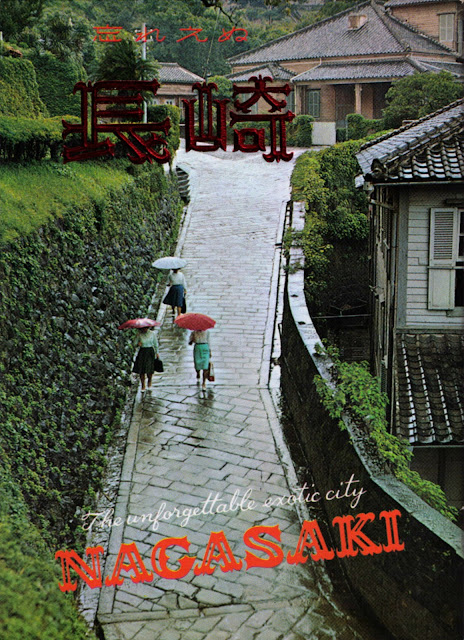In his 1880 book "Grant's Tour Around the World," J.F. Packard describes the arrival of the American party in Nagasaki as follows:
The landing-place had been arranged, not in the foreign section nor the Dutch concession, carrying out the intention of having the reception entirely Japanese. Lines of troops were formed, the steps were covered with red cloth, and every space and standing spot and coigne of vantage was covered with people. The General's boat touched the shore, and with Mrs. Grant on his arm and followed by the Colonel, the Japanese officials, and the members of his party, he slowly walked up the platform, bowing to the multitude who made this obeisance in his honor. There is something strange in the grave decorum of an Oriental crowd—strange to us who remember the ringing cheer and the electric hurrah of Saxon lands. The principal citizens of Nagasaki came forward and were presented, and, after a few minutes' pause, our party stepped into jinrickshaws and were taken to our quarters… Our quarters in Nagasaki had been prepared in the Japanese town. A building used for a female normal school had been prepared. It was a half mile from the landing, and the whole road had been decorated with flags, American and Japanese entwined, with arches of green boughs and flowers. Both sides of the road were lined with people, who bowed low to the General as he passed. On reaching our residence the Japanese officials of the town were all presented. Then came the foreign consuls in a body, who were presented by the American Consul, Mr. Mangum. After this came the officers of the Japanese vessels, all in uniform. Then came a delegation representing the foreign residents of all nationalities in Nagasaki, who asked to present an address… There were dinners and fetes during our stay in Nagasaki, some of which I may dwell on more in detail. The Governor of the province gave a State dinner on the evening of the 23d of June, served in French fashion; one that in its details would have done no discredit to the restaurants in Paris.Packard provides a detailed description of the brief stay in Nagasaki but omits one significant event: the tree-planting ceremony held at Suwa Park (Nagasaki Park) on the day after Grant's arrival. Interestingly, the people of Nagasaki remembered the tree-planting ceremony better than any other aspect of the visit. The handwritten note presented by Grant to Governor Utsumi on the occasion was not only preserved in local archives but also carved verbatim onto a monument placed beside the planted trees. The note read as follows: "Nagasaki Japan, June 22nd, 1879. At the request of Governor Utsumi Tadakatsu, Mrs. Grant and I each planted a tree in the Nagasaki Park. I hope that both trees may prosper, grow large, live long, and in their growth, prosperity and long life be emblematic of the future of Japan."
When an American tourist party visited Nagasaki in 1910, a welcoming group issued three commemorative postcards on the theme of Ulysses S. Grant's 1879 visit, no doubt regarding it as a highlight of American-Japanese friendship in the city. A photograph of the former president taken in Nagasaki was printed on one of the postcards along with a copy of the above handwritten note.
Needless to say, the welcoming group had no way to know that an atomic bomb dropped from an American B-29 bomber would devastate Nagasaki only 35 years later, or that the image on the postcard would be the only copy of the handwritten note remaining after the destruction of Nagasaki City Hall by fire in 1958.
Needless to say, the welcoming group had no way to know that an atomic bomb dropped from an American B-29 bomber would devastate Nagasaki only 35 years later, or that the image on the postcard would be the only copy of the handwritten note remaining after the destruction of Nagasaki City Hall by fire in 1958.




